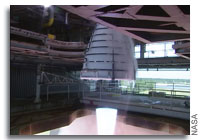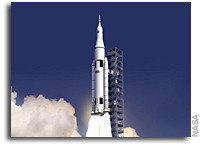NASA will pay a staggering $146 million for each SLS rocket engine, Ans Technica “However, this is not the true price of these engines. NASA has previously given more than $1 billion to Aerojet to “restart” production of the space shuttle era engines and a contract for six new ones. So, according to the space agency, NASA has spent $3.5 billion for a total of 24 rocket engines.” Keith’s note: […]
Statement by Sen. Shelby on NASA FY 2017 Budget Request “Surprisingly, NASA has not proposed a single dollar for the development of an upper stage engine that is absolutely necessary for a crewed mission that is only seven years away.” Keith’s note: Of course Shelby forgets that $1.2 billion NASA spent on the J-2X for use on Ares V and SLS upper stages – much of it was spent in […]
As NASA discards reusable engines, Blue Origin and SpaceX push new frontiers, Ars Techinca “On the Monday before Thanksgiving NASA made what it deemed a momentous announcement: the space agency had awarded $1.16 billion to Aerojet Rocketdyne for rocket engines that would power its “Journey to Mars.” By contrast, a few hours earlier, the private space company Blue Origin secretly launched a rocket into space and safely landed it. The […]
Decision looms on when to introduce new SLS upper stage, Spaceflight Now “Officials initially planned to power the upper stage with a J-2X engine, a modernized powerplant based on the J-2 engine designed in the Apollo era. But managers decided the J-2X, which had roots in the canceled Constellation moon program, was overpowered for the job and sidelined the engine after a series of hotfire ground tests. NASA spent more […]
NASA’s J-2X Engine To Be Mothballed After Testing, Aviation Week “NASA’s J-2X engine, once considered the pacing item for the next U.S. human-rated rocket, will go on the shelf after development testing wraps up next year because it will be years before the engine is needed to push humans toward Mars. While the agency is actively seeking other missions for the heavy-lift Space Launch System (SLS) in the planetary science […]
LEO Progress: J-2X to Test Stand A1, NASA Blog (Liquid Rocket Engines) “Recently, J-2X development engine 10002 was on the road. If you remember, E10002 went through a six-test series on test stand A2 that began in February and finished up in April. The next planned phase of E10002 testing is on test stand A1. In between these series, the engine was back in the assembly area of NASA Stennis […]
Video: NASA Tests Deep Space J-2X Rocket Engine “NASA conducted a 40-second test of the J-2X rocket engine Sept. 28, the most recent in a series of tests of the next-generation engine selected as part of the Space Launch System architecture that will once again carry humans into deep space. It was a test at the 99 percent power level to gain a better understanding of start and shutdown systems […]
NASA’s New Upper Stage Rocket Engine Ready For Testing, NASA “An upper stage engine is essential to making space exploration outside low-Earth orbit a reality,” said Mike Kynard, manager of the J-2X upper stage engine project at NASA’s Marshall Space Flight Center in Huntsville, Ala. “The J-2X goes beyond the limits of its historic predecessor and achieves higher thrust, performance, and reliability than the J2. We are thrilled to have […]




